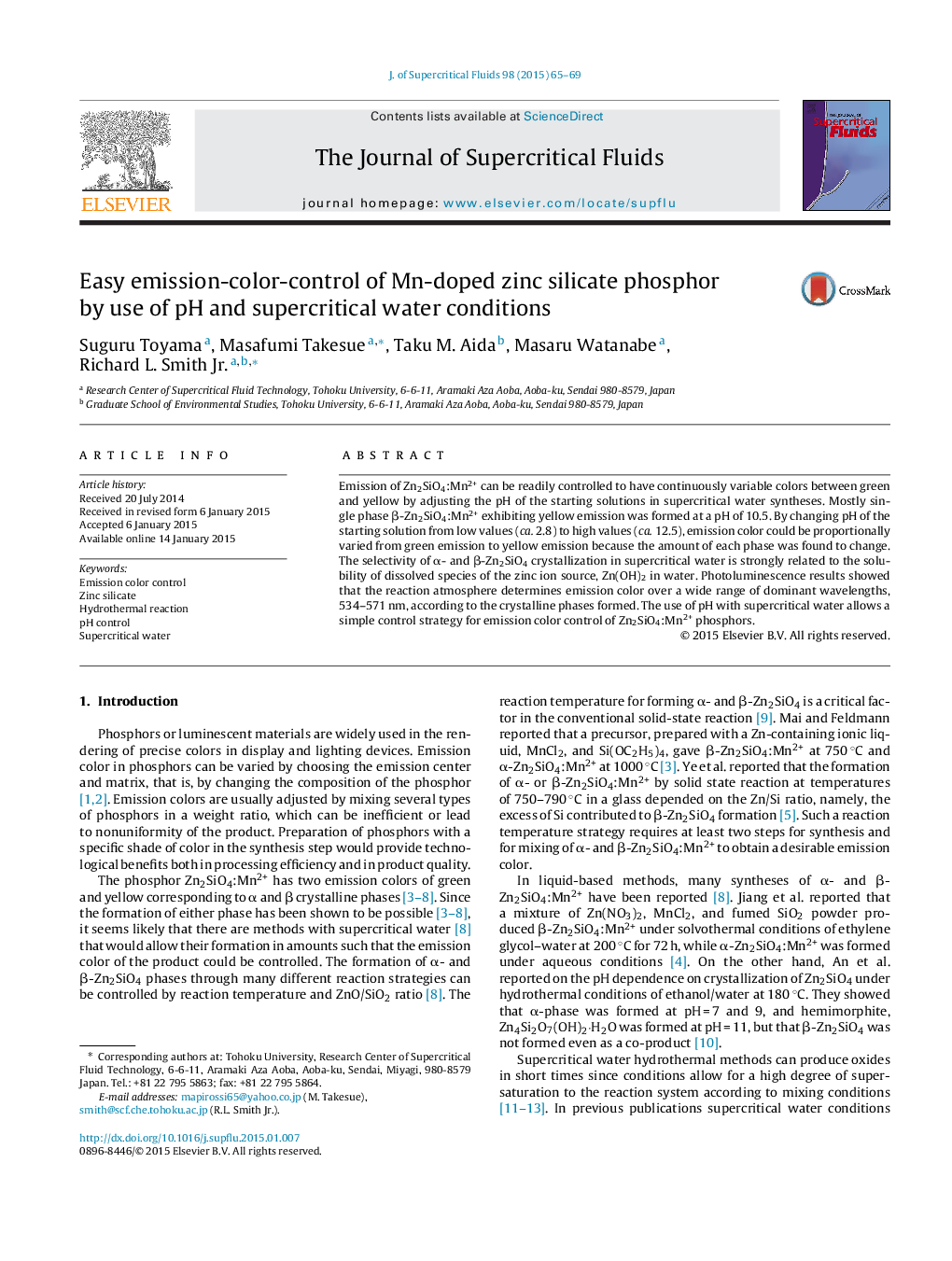| Article ID | Journal | Published Year | Pages | File Type |
|---|---|---|---|---|
| 230326 | The Journal of Supercritical Fluids | 2015 | 5 Pages |
•Zn2SiO4:Mn2+ phosphors with green to yellow emission by adjusting feed solution pH.•Dominant wavelength from 534 to 571 nm depends on crystalline phases formed.•Selectivity of α- and β-Zn2SiO4 phases depends on zinc ion source solubility.•Single phase β-Zn2SiO4:Mn2+ exhibiting yellow emission forms at a pH of 10.5.
Emission of Zn2SiO4:Mn2+ can be readily controlled to have continuously variable colors between green and yellow by adjusting the pH of the starting solutions in supercritical water syntheses. Mostly single phase β-Zn2SiO4:Mn2+ exhibiting yellow emission was formed at a pH of 10.5. By changing pH of the starting solution from low values (ca. 2.8) to high values (ca. 12.5), emission color could be proportionally varied from green emission to yellow emission because the amount of each phase was found to change. The selectivity of α- and β-Zn2SiO4 crystallization in supercritical water is strongly related to the solubility of dissolved species of the zinc ion source, Zn(OH)2 in water. Photoluminescence results showed that the reaction atmosphere determines emission color over a wide range of dominant wavelengths, 534–571 nm, according to the crystalline phases formed. The use of pH with supercritical water allows a simple control strategy for emission color control of Zn2SiO4:Mn2+ phosphors.
Graphical abstractFigure optionsDownload full-size imageDownload as PowerPoint slide
